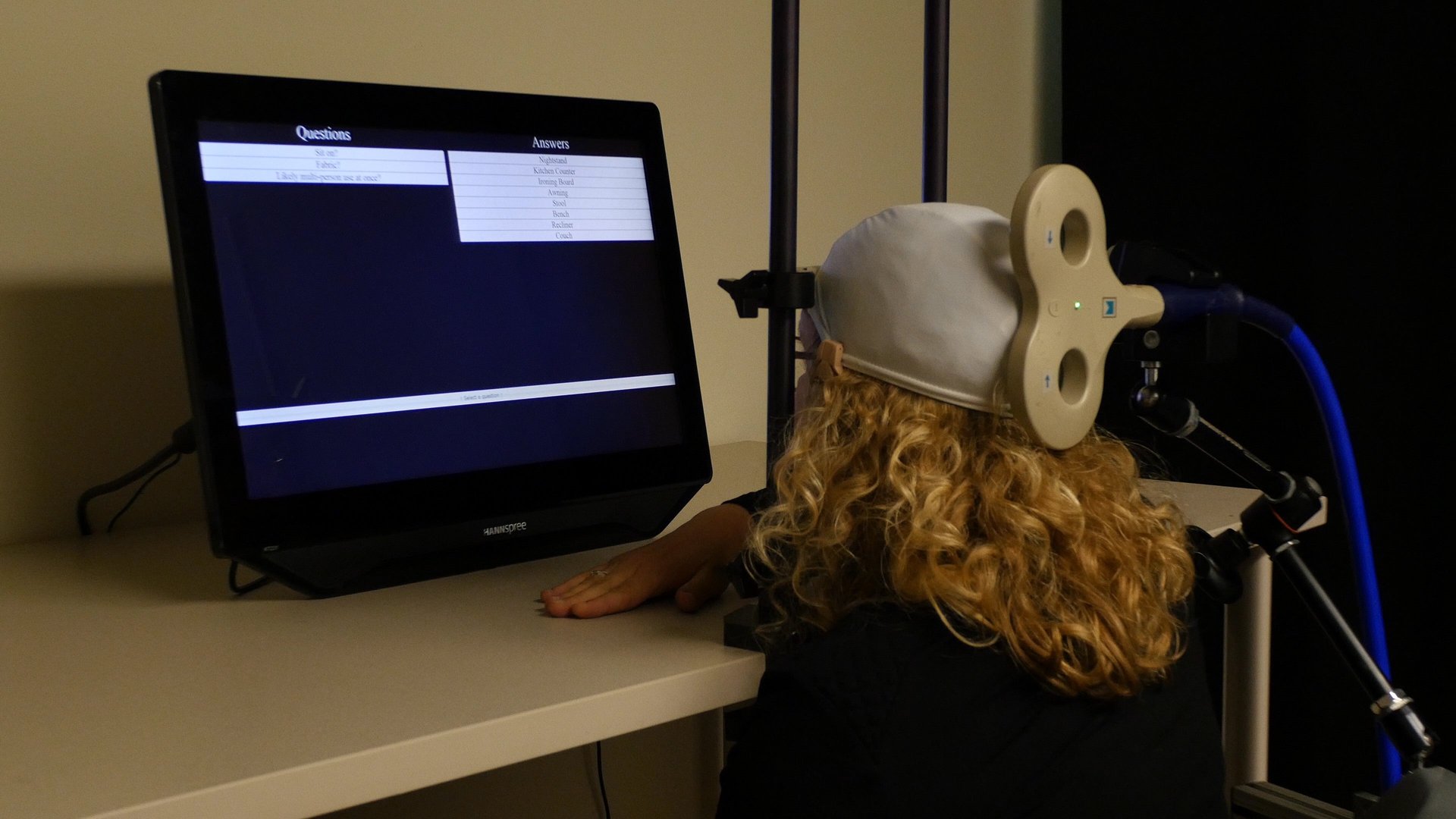People have linked their brains to play “20 Questions” using just their thoughts
Have you ever played “20 Questions“ without saying a word?


Have you ever played “20 Questions“ without saying a word?
Five pairs of people have, according to a new study that allowed them to share their thoughts through a non-invasive brain-to-brain interface during the game, where one person tries to guess the object another person is thinking.
One participant had to wear a cap connected to an electroencephalography (EEG) machine, which records electrical brain activity, while the other sat in a lab almost a mile away. The participants didn’t read peoples’ minds like Professor X does, but lead author Andrea Stocco claims its “the most complex brain-to-brain experiment, I think, that’s been done to date in humans.”
The first participant, known as the “respondent,” wears a cap, and is shown an object on a computer screen. The second participant, or the “inquirer,” has to the guess the object by sending a series of questions through a computer to the respondent, who answers “yes” or “no” by focusing on one of two flashing LED lights attached to the monitor.
Both a “yes” or “no” answer sends a signal to the inquirer, which activates a magnetic coil near the back of their head. But it’s only the signal from a “yes” answer that is strong enough to stimulate the visual cortex—this allows the inquirer to see a strong flash of light, known as a phosphene, in front of their eyes. The inquirer can then decipher what the object is through several rounds of correct or incorrect guesses.
The findings, detailed in the journal Plos One, are a huge leap from previous brain-to-brain interfaces, but the whole system is still quite slow. The respondents need to focus on the LED lights for up to 20 seconds before the computer decipher whether it’s a “yes” or “no” answer, while the inquirer needs to be trained for several hours before being able to detect the bright light.
Researchers hope to further develop this technology so it can one day be used for “brain tutoring,” where signals are sent from healthy brains to ones that are developmentally impaired.